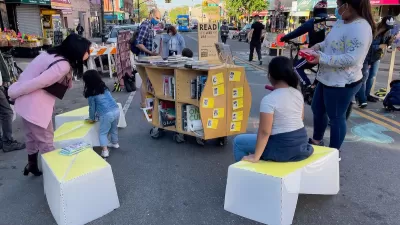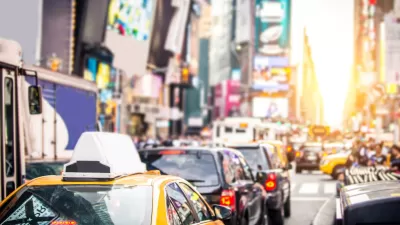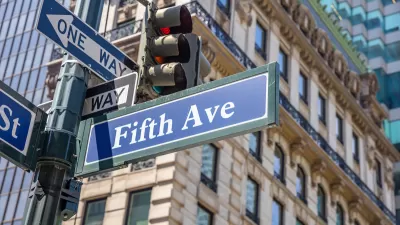Researchers at Harvard University have looked at multiple street grids around the country to identify what block size is the perfect length for walkability.

The Harvard Gazette spoke with Andres Sevtsuk, assistant professor of urban planning at the Harvard Graduate School of Design, about his research work looking at the connection between block length and what makes a walking-friendly environment. What the research finds is that in terms of a successful community that is pedestrian friendly, having blocks that are too small can prove detrimental.
The smaller your blocks, the more total perimeter you usually have. This perimeter could be activated through retail and commercial facades, and the more of that you have, the more animated or interesting an area tends to be. But if you take that to an extreme and have many tiny blocks, you start spending more time crossing streets instead of actually walking in front of stores. That’s where smaller is no longer better.
So what cities are doing it right? Sevtsuk's research finds that the blocks in Manhattan are very walkable—although, as stated above it involves more than just block size. While Portland, Oregon, Washington, D.C., Minneapolis, and Savannah, Georgia all have short blocks, they don't have the same density of pedestrian friendly destinations and activities that one finds in Manhattan.
FULL STORY: Why city blocks work

Alabama: Trump Terminates Settlements for Black Communities Harmed By Raw Sewage
Trump deemed the landmark civil rights agreement “illegal DEI and environmental justice policy.”

Study: Maui’s Plan to Convert Vacation Rentals to Long-Term Housing Could Cause Nearly $1 Billion Economic Loss
The plan would reduce visitor accommodation by 25% resulting in 1,900 jobs lost.

Why Should We Subsidize Public Transportation?
Many public transit agencies face financial stress due to rising costs, declining fare revenue, and declining subsidies. Transit advocates must provide a strong business case for increasing public transit funding.

Paris Bike Boom Leads to Steep Drop in Air Pollution
The French city’s air quality has improved dramatically in the past 20 years, coinciding with a growth in cycling.

Why Housing Costs More to Build in California Than in Texas
Hard costs like labor and materials combined with ‘soft’ costs such as permitting make building in the San Francisco Bay Area almost three times as costly as in Texas cities.

San Diego County Sees a Rise in Urban Coyotes
San Diego County experiences a rise in urban coyotes, as sightings become prevalent throughout its urban neighbourhoods and surrounding areas.
Urban Design for Planners 1: Software Tools
This six-course series explores essential urban design concepts using open source software and equips planners with the tools they need to participate fully in the urban design process.
Planning for Universal Design
Learn the tools for implementing Universal Design in planning regulations.
Smith Gee Studio
Alamo Area Metropolitan Planning Organization
City of Santa Clarita
Institute for Housing and Urban Development Studies (IHS)
City of Grandview
Harvard GSD Executive Education
Toledo-Lucas County Plan Commissions
Salt Lake City
NYU Wagner Graduate School of Public Service





























